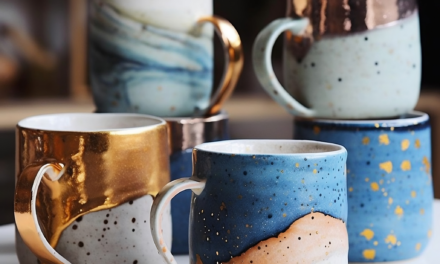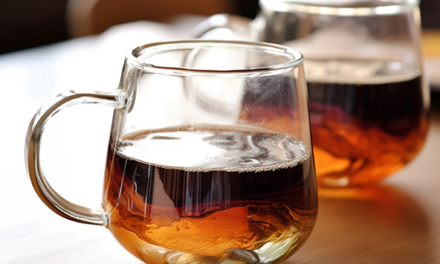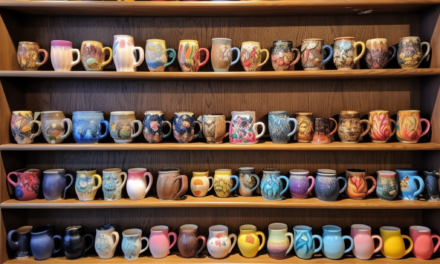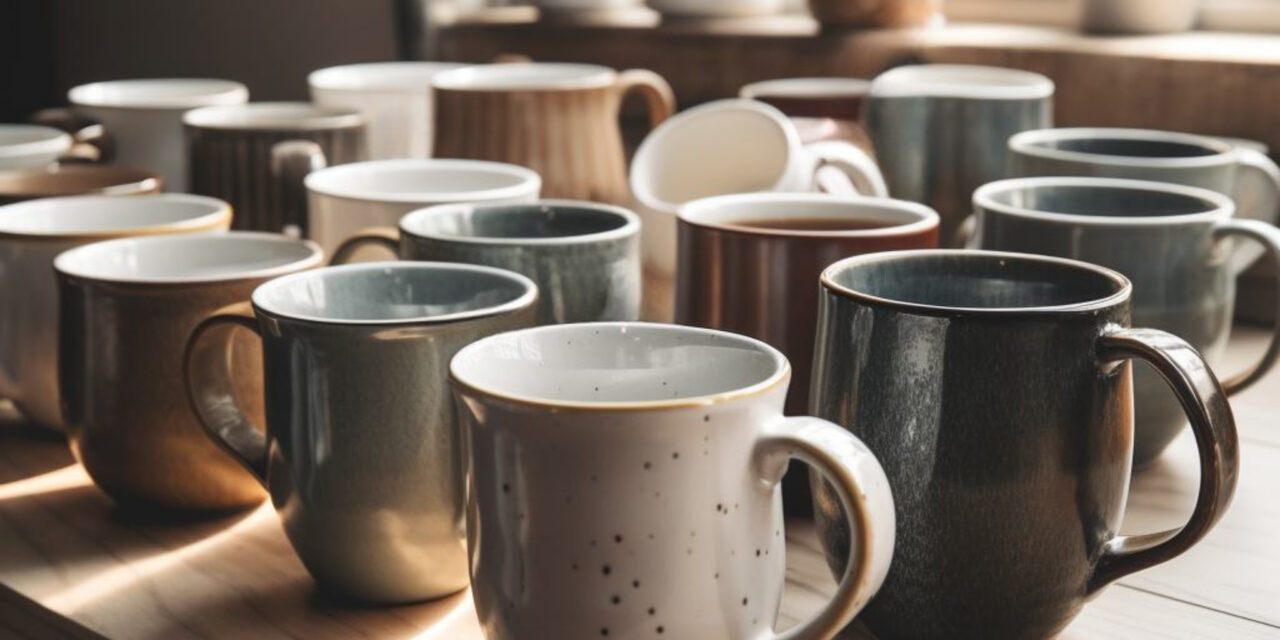As an Amazon Associate, we earn from qualifying purchases. We may also earn commissions if you purchase products from other retailers after clicking on a link from our site.
The choice of material for a coffee mug depends on personal preference, usage, and occasion.
Each material has its benefits and drawbacks, such as durability, its effect on your coffee’s flavor, insulation, and aesthetic appeal.
Here is a comprehensive overview of all the best materials for coffee mugs. I’ll also discuss a few materials to avoid.
1. Ceramic
Ceramic mugs are the most popular and widely used for coffee. They won’t affect the flavor of your coffee.
They’re made of clay that is fired at a high temperature and coated with a glaze that gives them a smooth, shiny finish. Ceramic mugs come in a variety of colors and designs.
Secondly, ceramic mugs are often dishwasher safe, which makes them easy to clean and maintain.
Thirdly, ceramic mugs come in a wide range of designs and colors, so you can choose one that suits your personal style.
Overall, ceramic coffee mugs are a great choice for anyone looking for a durable, easy-to-clean, and stylish option for enjoying their favorite hot beverages.
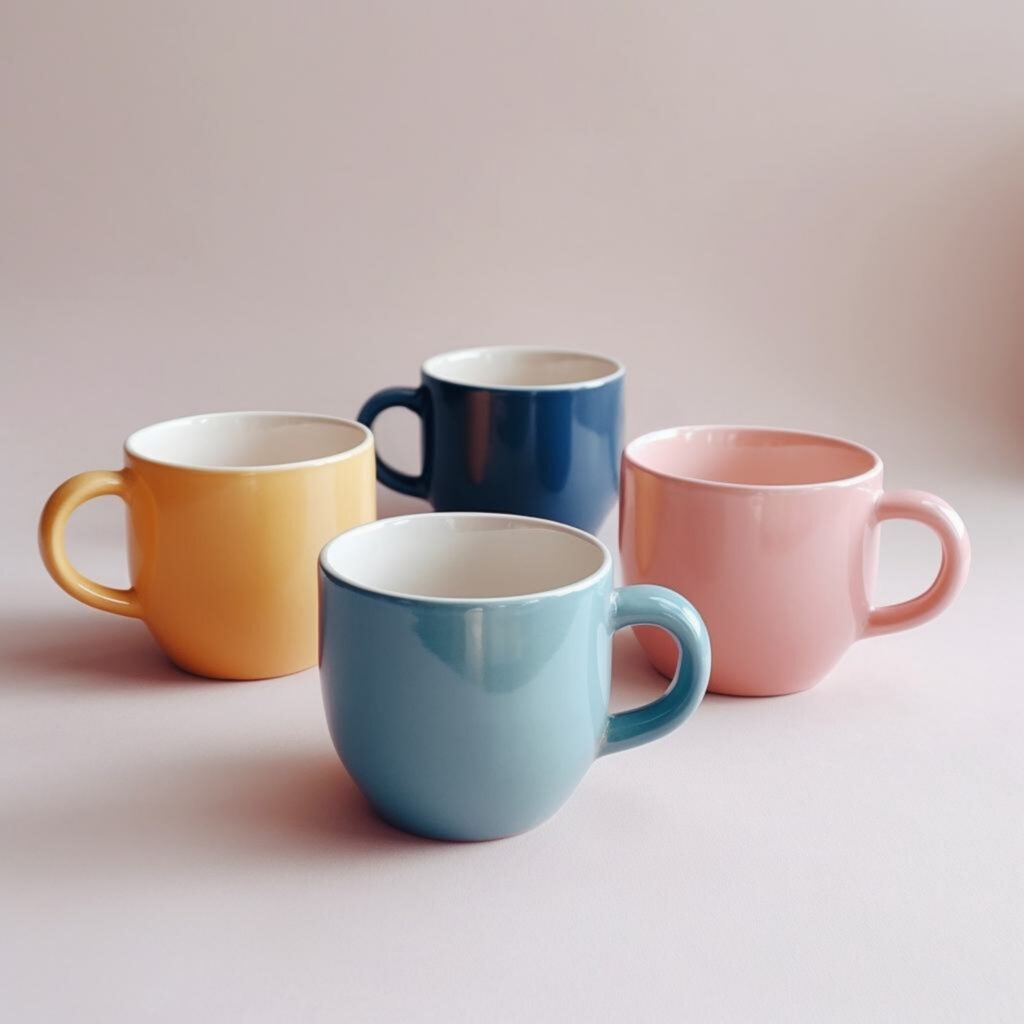
2. Porcelain
Like ceramic, porcelain is a type of clay that is fired at high temperatures to create a hard and durable material.
Porcelain is known for its elegance and translucency, which makes it a popular choice for high-end dinnerware and drinkware. Porcelain mugs are often thinner and lighter than ceramic mugs, which can make them more comfortable to hold.
Porcelain also has a smooth and non-porous surface, which makes it resistant to staining and absorbing odors. This means that porcelain coffee mugs are easy to clean and maintain and will not affect the flavor of your coffee.
Overall, porcelain coffee mugs are a great choice for anyone looking for a stylish and durable option for enjoying their favorite hot beverages.

3. Glass
Glass coffee mugs can also be a good option for many coffee drinkers. One of the main advantages of glass mugs is that they are transparent, allowing you to see the color and texture of your coffee, which can enhance the overall drinking experience.
Glass mugs are also non-porous and do not absorb any flavors or odors, which means they will not affect the taste of your coffee. Additionally, glass is a neutral material that does not react with acidic or alkaline substances, so it will not alter the pH of your coffee.
However, glass is a more fragile material than ceramic or porcelain, which means that glass mugs are more susceptible to breaking or cracking if dropped or mishandled. Glass mugs are also not as good at retaining heat as ceramic or porcelain mugs, so your coffee may cool down more quickly.
Overall, glass coffee mugs can be a good choice for coffee drinkers who value transparency and aesthetics but may not be the best option for those who prioritize durability and heat retention.
Glass mugs are less common than ceramic or porcelain, but they are still popular for certain types of coffee, such as lattes and cappuccinos. They are often double-walled, which helps keep the coffee warm without burning your hands.
Check out how cool latte art can look in this video by Lance Hedrick:

4. Stainless Steel
Stainless steel coffee mugs can be a great option for many coffee drinkers. Stainless steel is a durable and non-porous material that is resistant to scratches, rust, and corrosion. This makes it an ideal material for coffee mugs that will be used frequently and need to withstand wear and tear.
Stainless steel mugs are also excellent at retaining heat, which means that your coffee will stay hot for longer periods of time compared to other materials like glass or ceramic. This makes stainless steel mugs a great choice for people who enjoy drinking their coffee slowly or who like to take their coffee on the go.
Stainless steel mugs are also easy to clean and maintain and are often dishwasher-safe. Additionally, stainless steel mugs are typically lightweight and unbreakable, making them a great choice for outdoor activities like camping or hiking.
Overall, stainless steel coffee mugs can be a great choice for coffee drinkers who value durability, heat retention, and portability.
Stainless steel mugs are durable and often used for travel mugs. They are insulated to keep the coffee warm for a longer period of time.
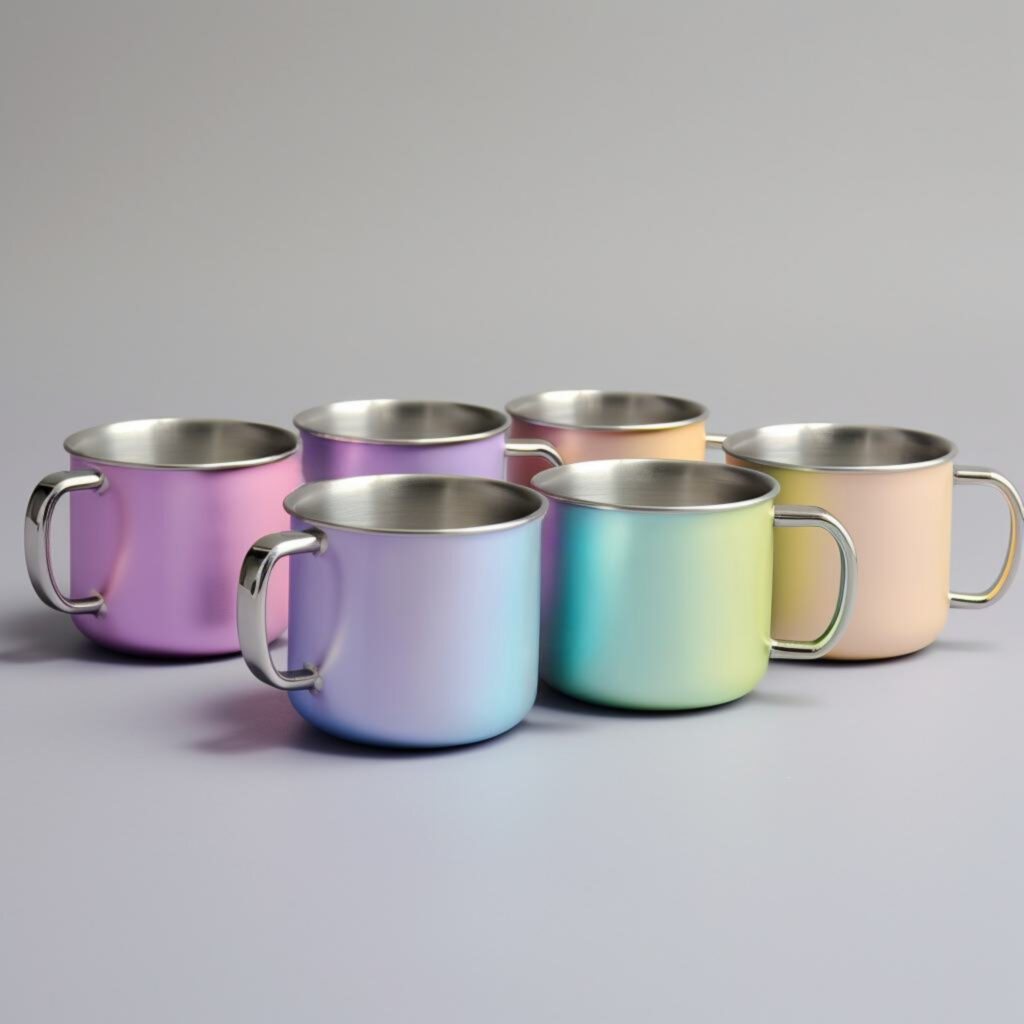
5. Plastic
Plastic coffee mugs can be a convenient option for some coffee drinkers, but they may not be the best choice for everyone.
One of the advantages of plastic mugs is that they are lightweight and unbreakable, making them ideal for outdoor activities like camping, hiking, or picnics. Plastic mugs are also often less expensive than other materials and come in a wide range of colors and designs.
However, plastic mugs are not as durable or heat-resistant as other materials like ceramic, porcelain, or stainless steel. They may become discolored, cracked, or scratched over time, which can affect their appearance and functionality.
Additionally, some plastic materials may contain chemicals that can leach into hot beverages, which may pose health risks. Therefore, it’s important to choose BPA-free plastic mugs that are labeled as safe for hot liquids.
Overall, plastic coffee mugs can be a convenient option for some coffee drinkers, especially for outdoor use or for those on a tight budget. However, they may not offer the same level of durability or safety as other materials, so it’s important to choose high-quality, BPA-free options.
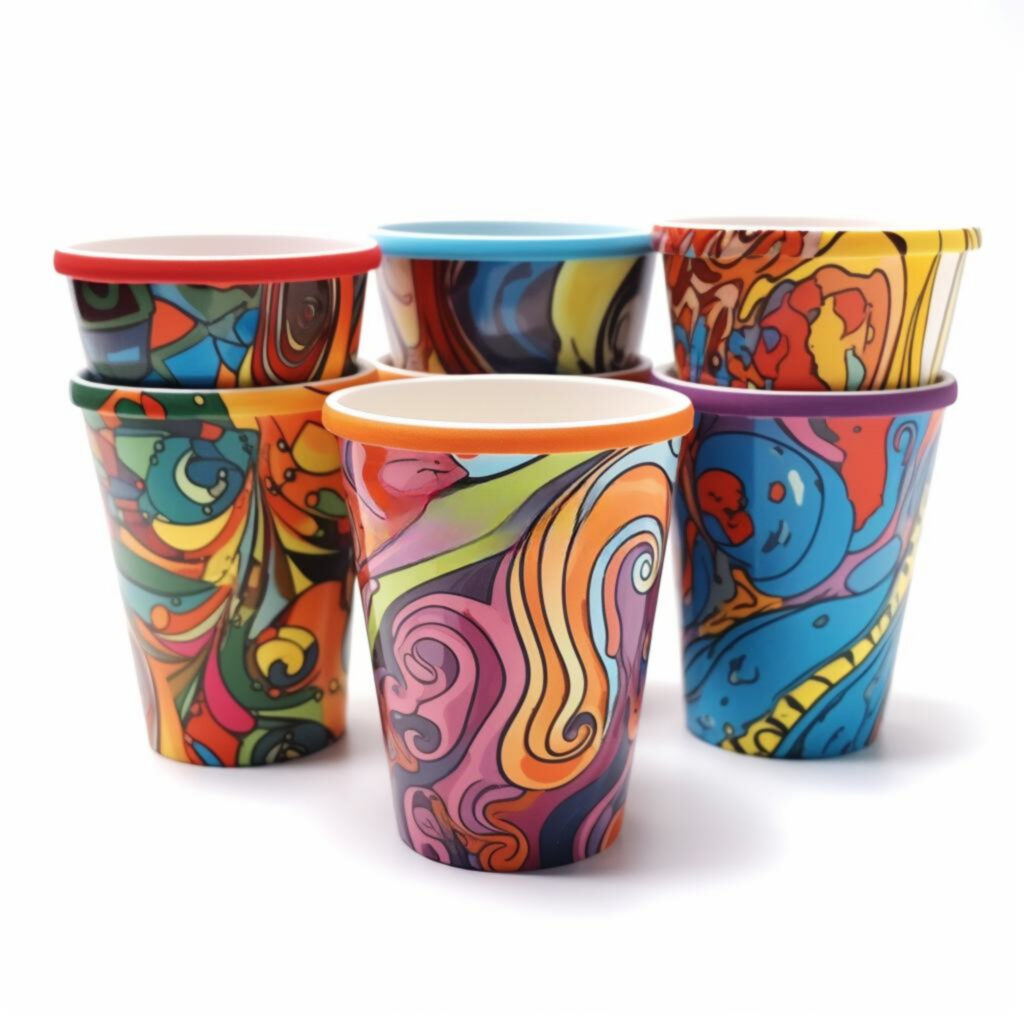
6. Enamel
Enamel coffee mugs are another option to consider, especially for outdoor activities.
Enamelware is made by fusing powdered glass to metal, creating a durable and smooth coating that is resistant to scratches and chipping.
Enamel mugs are lightweight, easy to clean, and resistant to staining, making them a good choice for camping, picnics, or other outdoor activities. They also offer a rustic and vintage look that is popular with many people.
Enamelware is also oven-safe, which means that enamel coffee mugs can be used to heat up drinks like hot chocolate or tea over a fire or on a stove.
However, enamel mugs are not as good at retaining heat as other materials like ceramic, porcelain, or stainless steel. Additionally, they may chip or crack if dropped or exposed to high heat, which can affect their durability and appearance.
Overall, enamel coffee mugs can be a good choice for those who enjoy the outdoors and value a vintage aesthetic. However, they may not be the best option for those who prioritize heat retention or durability.
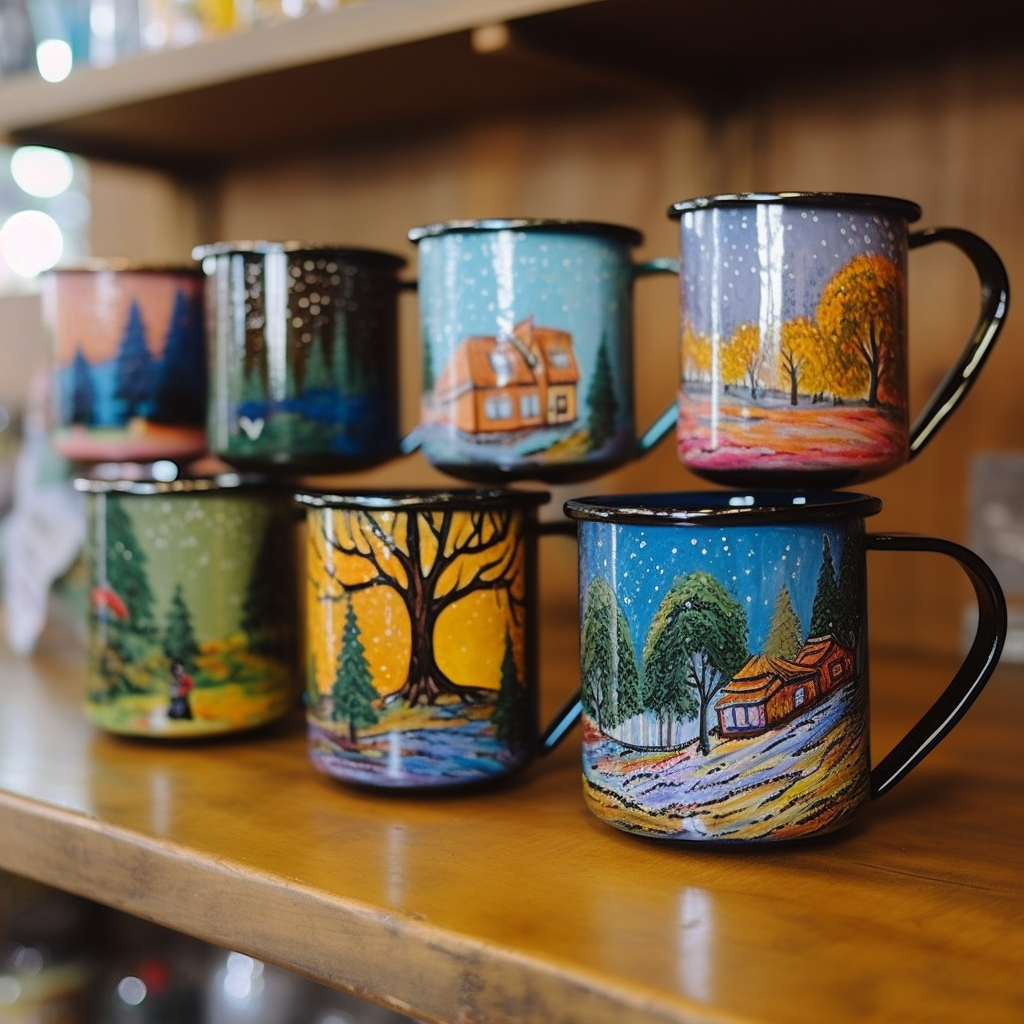
7. Stoneware
Stoneware coffee mugs are another great option to consider. Stoneware is a type of clay that is fired at high temperatures, creating a dense and durable material that is resistant to chipping, cracking, and thermal shock.
Stoneware mugs have a natural and rustic appearance, with variations in color and texture that can make each mug unique. They are also available in a variety of designs and colors to suit different preferences.
One of the advantages of stoneware mugs is that they are excellent at retaining heat, which means that your coffee will stay hot for longer periods of time compared to other materials like glass or plastic. This makes stoneware mugs a great choice for people who enjoy drinking their coffee slowly.
Stoneware mugs are also dishwasher-safe at lower temps and are easy to clean, making them a convenient option for everyday use.
However, stoneware mugs are generally heavier than other materials like porcelain or glass, which can make them less comfortable to hold for long periods of time. They may also be more expensive than some other options.
Overall, stoneware coffee mugs can be a great choice for coffee drinkers who value durability, heat retention, and a natural and rustic appearance.
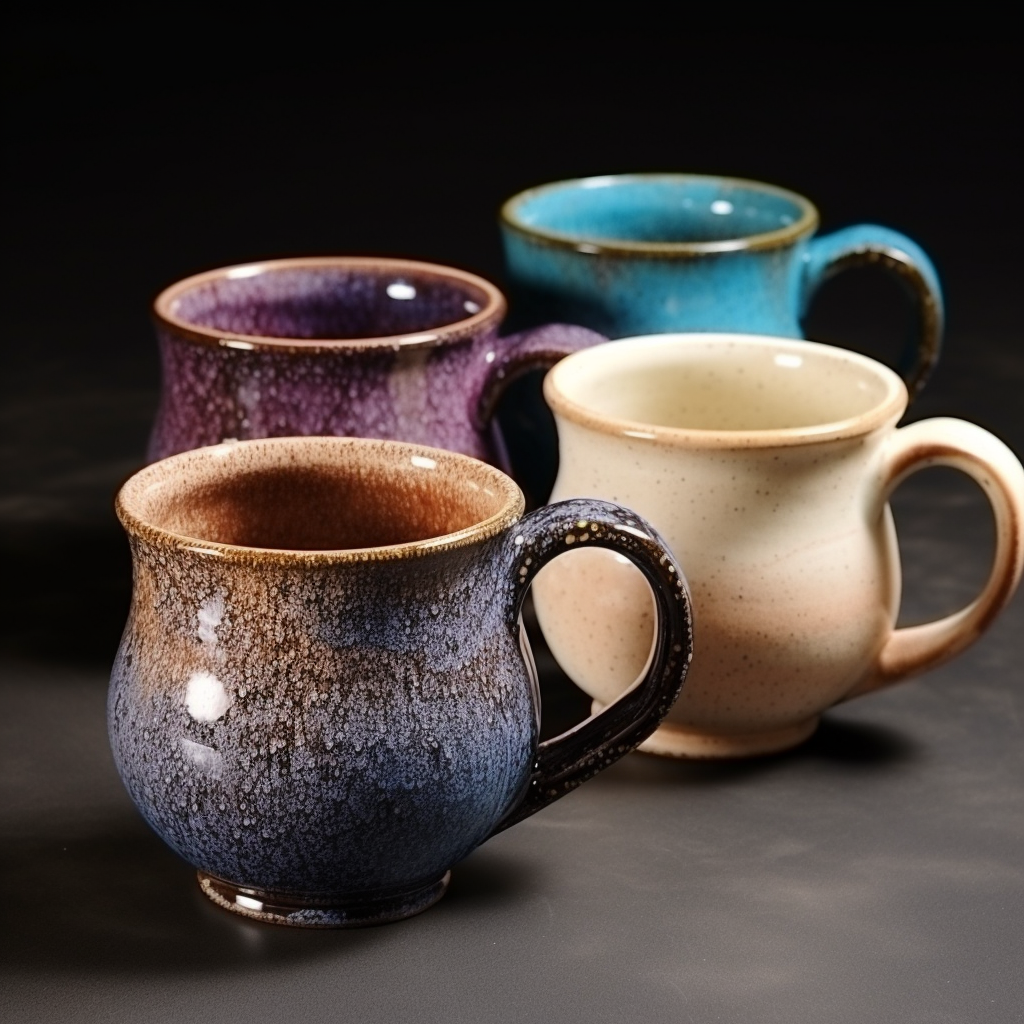
8. Bamboo
Bamboo coffee mugs are a relatively new addition to the market and can be a good option for those who want to use eco-friendly and sustainable products. Bamboo is a fast-growing and renewable resource, making it a great alternative to materials like plastic or paper.
Bamboo coffee mugs are lightweight, durable, and available in a variety of designs and colors.
One of the advantages of bamboo mugs is that they are generally more affordable than other materials like ceramic or stoneware. Additionally, they are biodegradable and compostable, which means that they can be disposed of in an environmentally friendly way.
However, bamboo mugs may not be as good at retaining heat as other materials like stainless steel or stoneware. They may also be more susceptible to staining and may absorb odors over time.
Overall, bamboo coffee mugs can be a good choice for those who prioritize sustainability and affordability. However, they may not offer the same level of heat retention or durability as other materials, so it’s important to choose high-quality options that meet your needs.
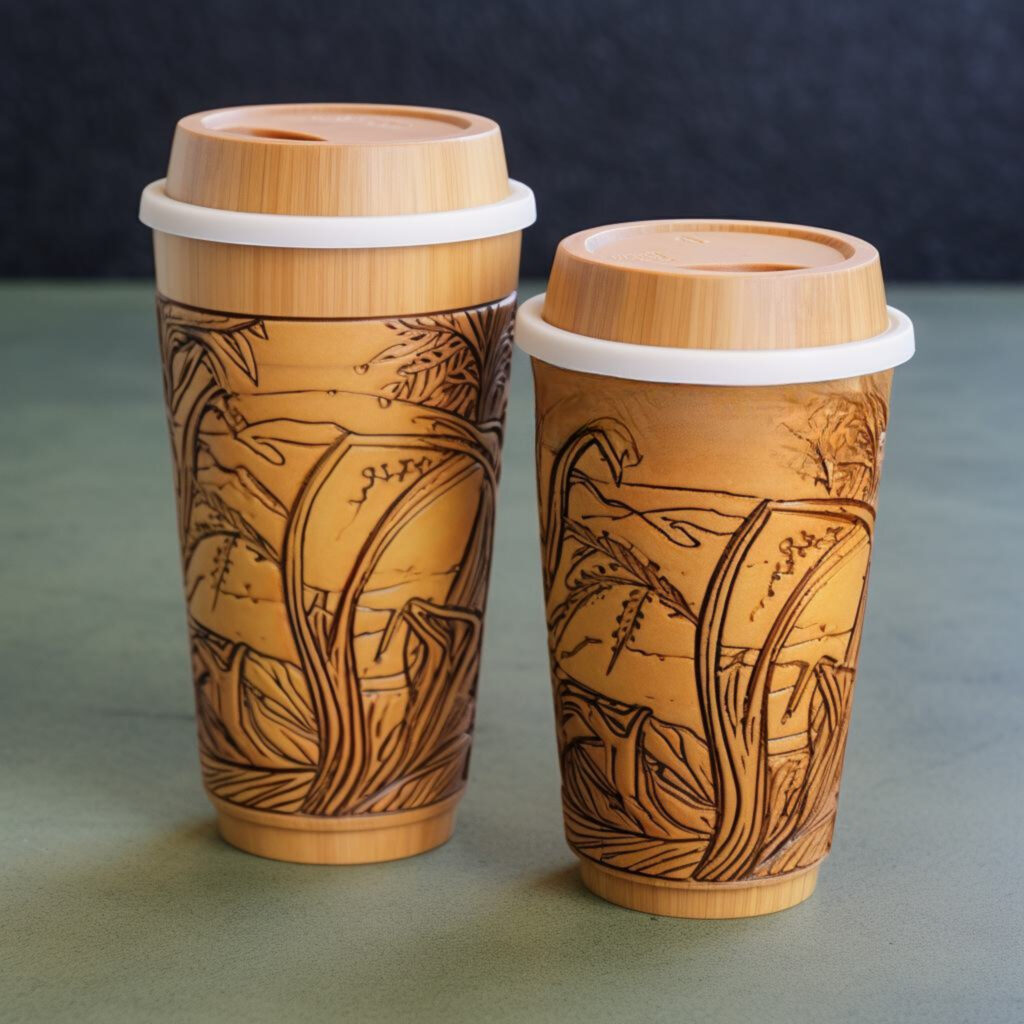
9. Copper
Copper coffee mugs are a popular choice for cold beverages like iced coffee or, what they’re best known for, Moscow Mules. Copper has excellent thermal conductivity, which means that it can keep drinks cold for longer periods of time.
Copper mugs are also durable, corrosion-resistant, and have an elegant and stylish appearance that can add a touch of sophistication to any table setting. They are often lined with another metal like stainless steel to prevent the copper from leaching into the drink and affecting its taste.
However, copper mugs can be expensive and require special care to maintain their appearance and functionality. They may tarnish or discolor over time, which can affect their aesthetic appeal.
Overall, copper coffee mugs can be a great choice for those who enjoy cold drinks and want a stylish and elegant mugs. However, they may not be the best option for those on a tight budget or those who prioritize heat retention or ease of maintenance.
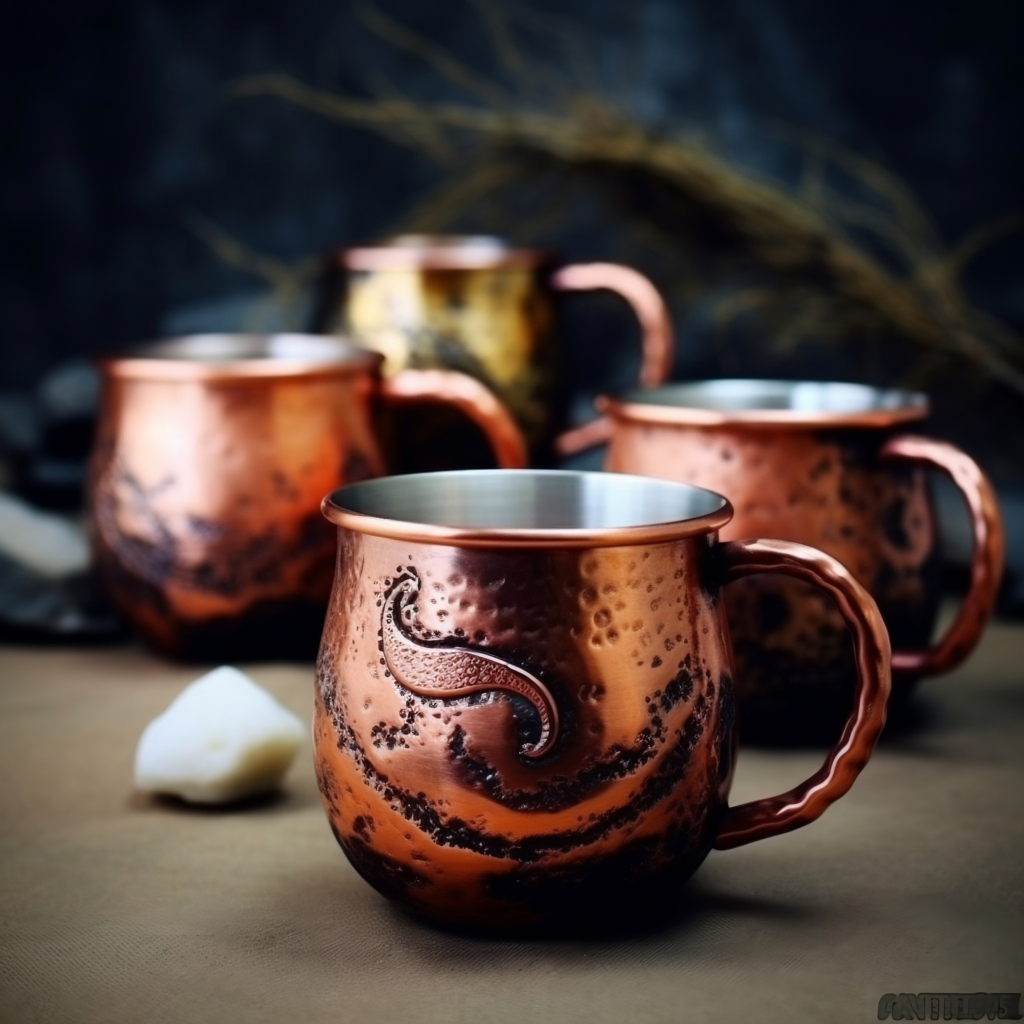
10. Silicone
Silicone coffee mugs are another option to consider, particularly for those who prioritize portability and convenience. Silicone is a lightweight and flexible material that is often used in kitchenware and cookware because of its durability and heat resistance.
Silicone coffee mugs are collapsible and easy to pack, making them a great choice for travel, camping, or hiking. They are also microwave-safe and dishwasher-safe, which makes them easy to clean and maintain.
However, silicone mugs may not be as good at retaining heat as other materials like ceramic or stainless steel, which means that your coffee may cool down more quickly. Additionally, some people may not like the texture or feel of silicone.
Overall, silicone coffee mugs can be a great choice for those who prioritize portability and convenience and don’t require high heat retention. However, they may not be the best option for those who prefer a traditional coffee mug or want to keep their coffee hot for longer periods of time.
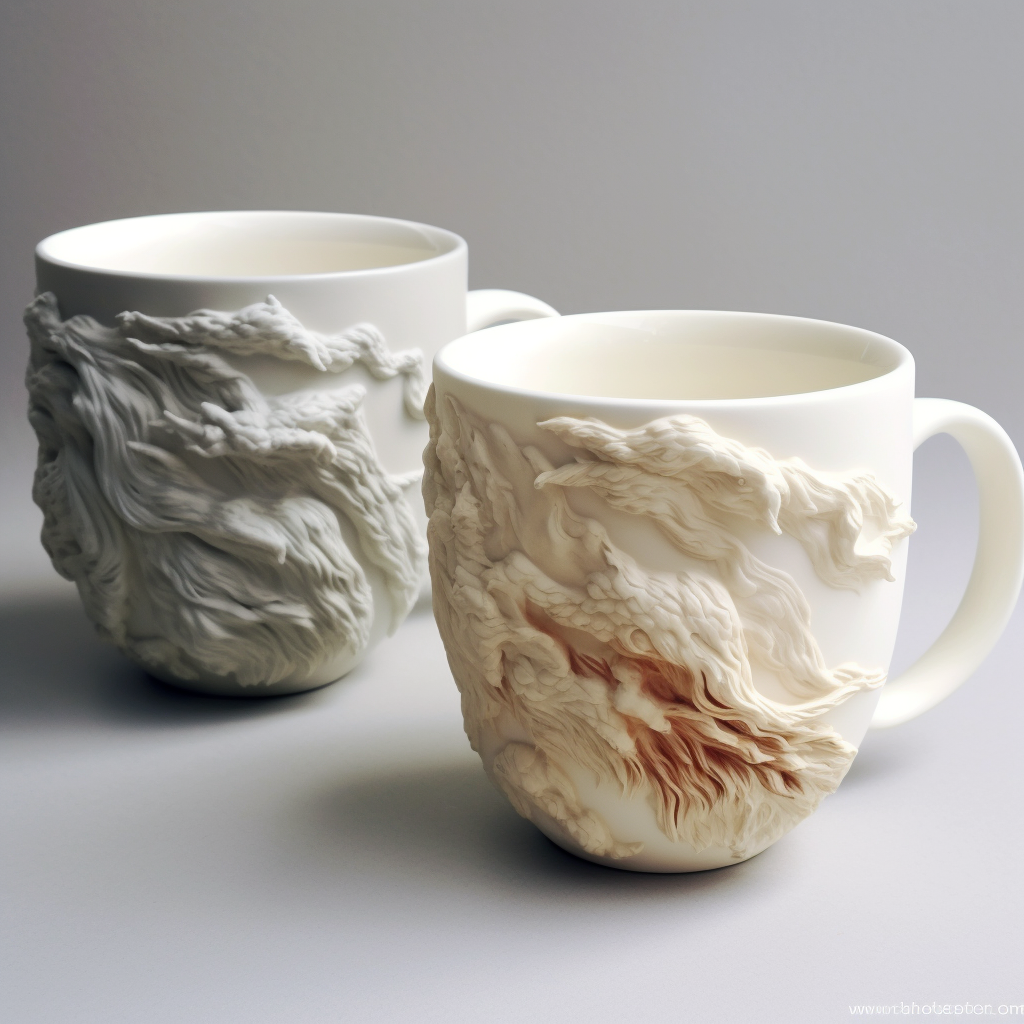
11. Wood
Wooden coffee mugs are a unique and eco-friendly option. They are often made from sustainably sourced wood and are coated with a food-safe sealant to make them safe for use.
However, wood mugs aren’t dishwasher safe and may require special care to maintain their appearance and functionality.
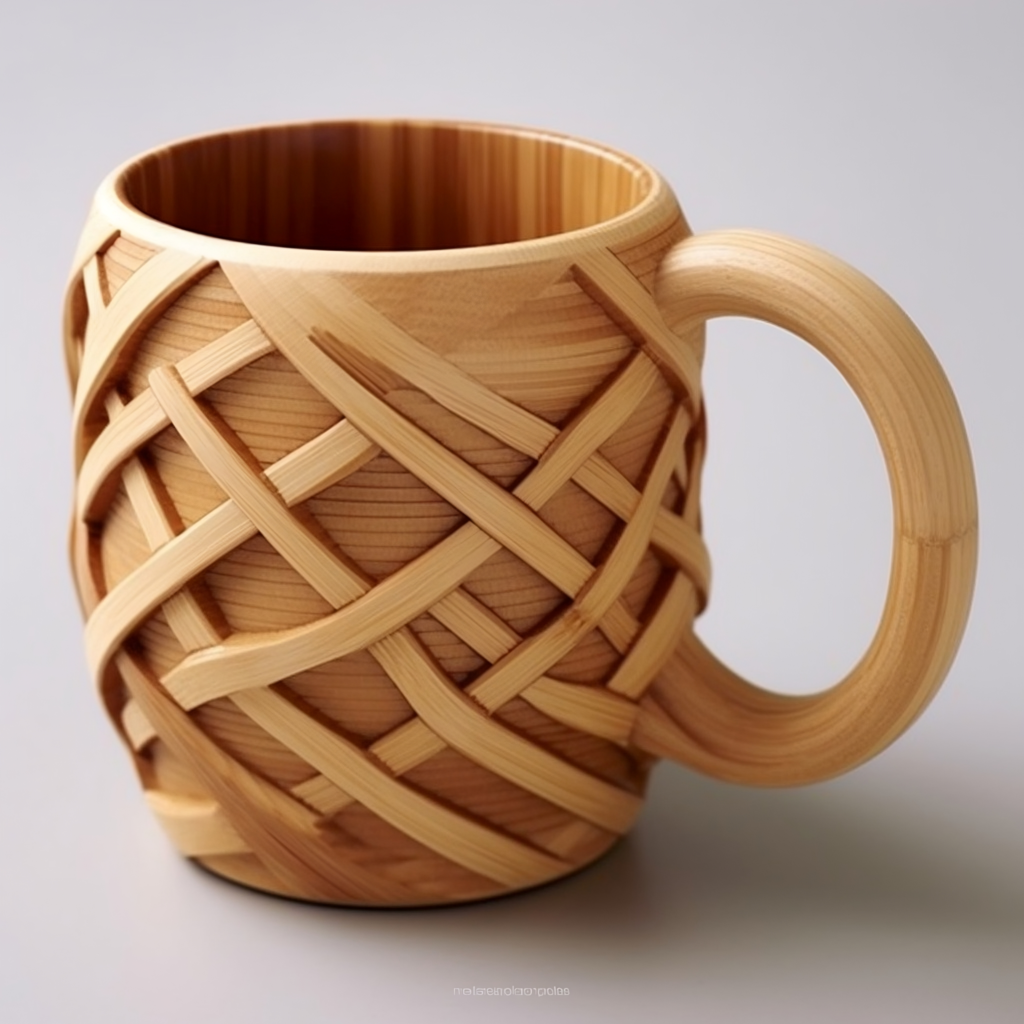
12. Bone
Bone china coffee mugs are a type of porcelain that is made by adding bone ash to the clay mixture.
This gives bone china mugs a translucent and elegant appearance, as well as a lightweight and delicate feel.
However, bone china mugs may be more fragile than other materials and may not be as durable over time.
7 Worst Materials for Coffee Mugs
There are several reasons why you may want to avoid certain coffee mug materials, depending on your personal preferences and needs.
Firstly, some materials may affect the taste of the coffee. For example, some metals may give the coffee a metallic taste, while some plastics may absorb flavors from the coffee or other drinks over time.
Secondly, some materials may not be as durable or long-lasting as others. For example, plastic mugs may scratch or crack easily, while glass mugs may break if dropped.
Thirdly, certain materials may not be safe for use with hot beverages or in the microwave. For example, plastic mugs may release harmful chemicals when exposed to high temperatures, while metal mugs may become hot to the touch and cause burns.
Lastly, some materials may not be environmentally friendly. For example, plastic mugs may contribute to plastic waste and pollution, while disposable paper cups may contribute to deforestation and waste.
In general, it’s safe to drink coffee from most materials, but there are some materials that you may want to avoid due to health or safety concerns:
1. Lead-based Ceramic or Pottery
Some older ceramic or pottery mugs may contain lead, which can harm your health if ingested over a long period of time. It’s best to avoid using any mugs that you suspect may contain lead. They’re usually white and come from the 70s or are even older.

2. Aluminum
Aluminum coffee mugs are lightweight and durable, making them a great choice for outdoor activities like camping or hiking. However, aluminum mugs may not be as good at retaining heat as other materials and may affect the taste of the coffee if it comes into contact with the metal.
Most notably, some studies have suggested that high levels of aluminum intake may be linked to health issues, such as Alzheimer’s disease. While aluminum mugs are generally safe to use, you should limit your exposure to aluminum over the long term.
3. Polystyrene Foam
Styrofoam cups or mugs may release harmful chemicals when exposed to high temperatures, which can affect the taste of the coffee and may be harmful to your health.
4. Uncoated Copper or Brass
Some traditional copper or brass cups or mugs may not be coated with a food-safe material, which can cause the metal to leach into the coffee and be harmful to your health.
5. Melamine
Melamine is a type of plastic that is sometimes used to make coffee mugs. Some people even recommend using it for coffee, but I strongly disagree. It’s not recommended for use with hot beverages, as it may release harmful chemicals when exposed to high temperatures.
Ultimately, we’ll need to see more research to decide if this material is safe.
6. Cheap, Low-quality Plastics
Some cheap plastic mugs may not be made from safe or durable materials and may be prone to cracking, breaking, or releasing harmful chemicals.
7. Painted or Coated Mugs
Some mugs may be painted or coated with materials that are not food safe, which can be harmful if ingested. It’s best to choose mugs that are labeled as food safe and made from safe, durable materials.

FAQs
Are Plastic Coffee Mugs Good?
Plastic coffee mugs are generally safe to use, but there are some considerations to keep in mind.
First, plastic mugs may not be as durable as other materials and may scratch or crack easily. Additionally, plastic may absorb odors or flavors from coffee or other drinks, which can affect the taste over time.
Another concern with plastic coffee mugs is that they may release harmful chemicals when exposed to high temperatures, such as those from microwaving or hot beverages. It’s important to choose a plastic mug that is specifically labeled as microwave and dishwasher-safe.
If you prefer to use plastic coffee mugs, look for ones that are made from BPA-free materials, which are generally considered safer than traditional plastics. You may also want to consider using a reusable silicone lid or sleeve to help keep your drink hot and reduce the risk of spills.
Overall, plastic coffee mugs can be a convenient and affordable option, but it’s important to choose a high-quality, safe product and take care when using and cleaning it.
Will a Wooden Coffee Mug Warp in the Dishwasher?
It is generally not recommended to put wooden coffee mugs in the dishwasher, as the high heat and moisture can cause them to warp, crack, or lose their finish. Wooden mugs are best washed by hand with warm, soapy water and dried thoroughly before use.
If you do want to clean your wooden coffee mug in the dishwasher, it’s important to check the manufacturer’s recommendations first. Some wooden mugs are specifically designed to be dishwasher safe, while others are not. Additionally, it’s a good idea to place the mug in the top rack of the dishwasher and use a gentle cycle to minimize the risk of damage.
However, to ensure the longevity of your wooden coffee mug, it is generally best to wash it by hand.
What Coffee Mug Material Is the Best Choice?
The best choice of coffee mug material ultimately depends on your personal preferences and needs. Each material has its own advantages and disadvantages, and the best choice will depend on factors like your budget, how you plan to use the mug and your desired level of heat retention and durability.
For example, if you prioritize heat retention and durability, then stainless steel or ceramic may be good options to consider. If you want a lightweight and portable option, then silicone or bamboo may be a better choice. If you want a stylish and elegant option, then porcelain or bone china may be more suitable.
It’s also worth considering the environmental impact of the materials you choose. Materials like bamboo, silicone, or stainless steel are more eco-friendly than disposable options like paper or plastic cups.
My favorite is double-walled glass because it looks incredible, retains heat reasonably well, doesn’t affect the flavor, and is eco-friendly.
Ultimately, the best coffee mug material is one that meets your needs, is comfortable to hold and drink from, and makes your coffee-drinking experience enjoyable.


